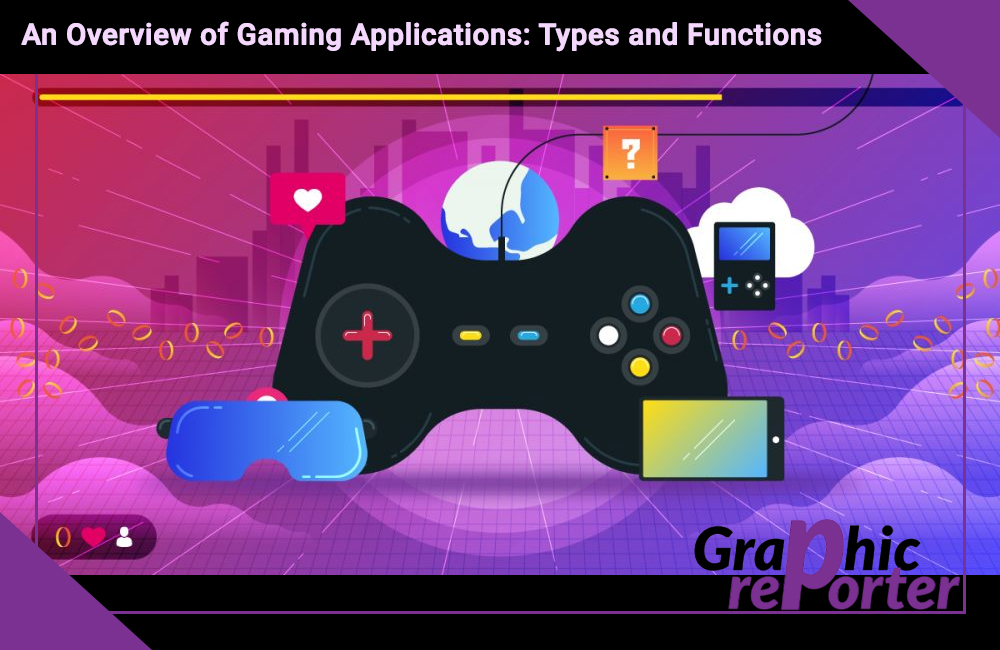An Overview of Gaming Applications: Types and Functions

Table Of Contents
Introduction:
Gaming applications play a crucial role in creating an unforgettable gaming experience for players worldwide. They are software that enables players to play video games on different platforms. There is a huge variety of gaming applications that perform various tasks, from in-game purchases and management to communication and comfortable gaming. We often encounter such applications, up to casino games, where the casino operator performs the function of such an application. Those who are looking for a game here and now are annoyed by such conditions, and therefore there is an option of no account casino. In this article, we will discuss the main types of gaming applications and their role in the gaming industry.
In-game Applications:
In-game applications are applications that provide systematization of the gaming experience and purchases within the game. They offer players various options such as choosing the game mode, buying in-game items, and more.
- Candy Crush Saga: This is a puzzle game that was released in 2012 and quickly became very popular. Players need to match colored candies to complete levels.
- Fortnite: is a third-person shooter game where players fight for survival in a large arena. Players can play alone, with friends, or in the battle of kings mode, where 100 players fight for survival on a single map.
- Among Us: is a brain game where players play as a team of space travelers who are trying to discover which of them is the imposter.
- Pokemon Go: is an adventure game in which players take to the streets to catch various Pokemon using GPS technology on their smartphones.
- Clash of Clans: is a strategy game in which players build their own villages, fortifications and armies to compete with other players for resources.
Distributor Applications:
Distributor applications are applications that are designed to distribute games from different developers. These applications offer users the ability to purchase and download games, as well as receive updates and other news from developers. Some of the most popular distributor applications include:
- Game item stores such as Steam, Epic Games Store, PlayStation Store, and Xbox Live Marketplace. These stores allow users to buy and download games and additional content.
- Game account management applications such as Battle.net and Origin. They enable users to manage their gaming accounts, view their games, and manage settings.
- Communication and coordination applications such as TeamSpeak and Mumble. They provide communication between players and allow them to coordinate their actions in the game.
- Game statistics analysis applications such as Overwolf and Plays.tv. They help players analyze their gameplay and improve their gaming skills.
These game stores are an essential part of the gaming infrastructure and are popular among players worldwide. They offer a huge selection of games on different platforms and have different monetization models such as game sales, subscriptions, and in-game item purchases. In addition, game stores also provide a platform for game developers to sell their games, making them an indispensable tool for the gaming industry.
Secondary Applications:
Secondary applications are applications that are used during the gameplay process to perform additional tasks and provide a comfortable gaming experience. They may include:
- Communication and coordination applications such as Discord and Skype. They provide players with voice and text communication, which helps them collaborate and coordinate their actions in the game.
- Streaming applications such as Twitch and YouTube Gaming. They allow players to stream their games and share their experience with other players.
- Applications for creating custom maps and mods, such as Unreal Engine and Unity. They provide developers with the ability to create their own games, levels, and modifications for existing games.
- Applications for working with video games in augmented and virtual reality, such as SteamVR and Oculus. They enable players to get a more realistic gaming experience and enhance their gameplay process.
Conclusion:
In conclusion, gaming applications play a huge role in the gaming industry and provide an unforgettable gaming experience for millions of players worldwide. They can perform various tasks, from managing in-game experience to communication and content creation. Each type of gaming application has its role in creating a more complete gaming experience and improving interaction between players. Game developers should consider their role and possibilities when creating their games to ensure the most comfortable and enjoyable gaming experience.





![Is UNO Cross-Platform in 2023? [PC, Mobile, Xbox, PlayStation]](https://graphicreporter.com/wp-content/uploads/2023/07/Is-UNO-Cross-Platform-Everything-You-Need-to-Know-768x499.jpg)
